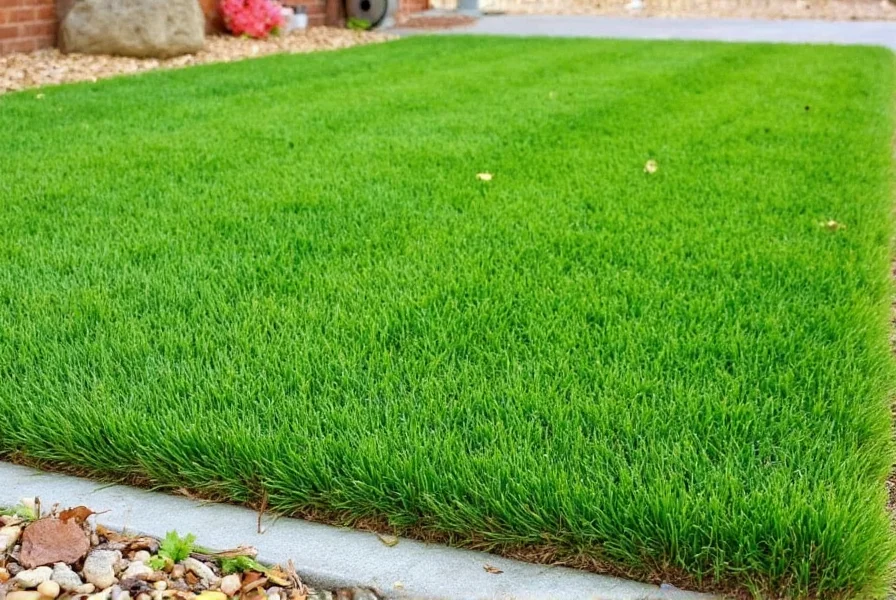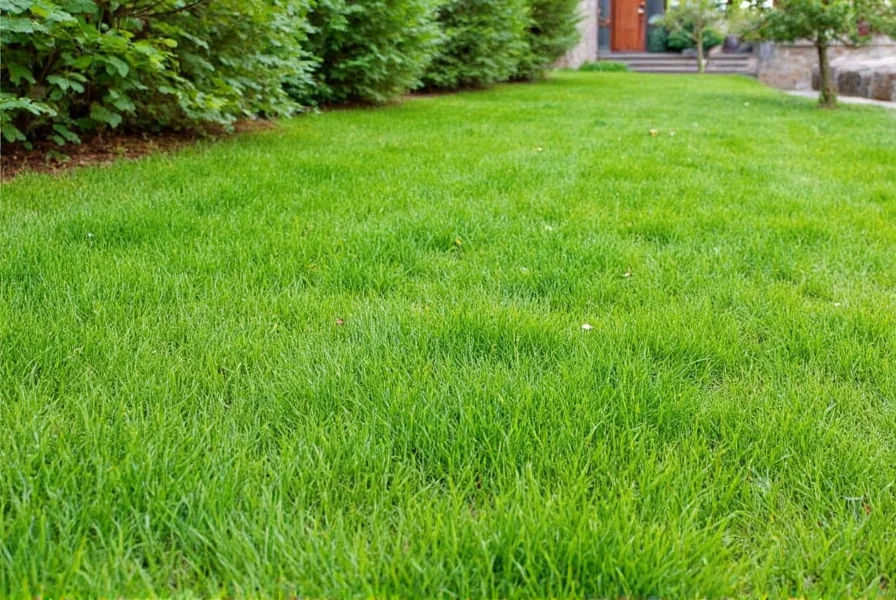For homeowners seeking an eco-friendly lawn solution, mini clover presents compelling advantages over conventional turf grass. Unlike standard white clover varieties, this specialized cultivar maintains a consistently low profile without frequent mowing, making it ideal for residential landscapes where a manicured appearance matters. The plant's trifoliate leaves create a lush, uniform carpet that stays green throughout the growing season, even during dry periods when traditional grass would brown.
Understanding Mini Clover Characteristics
Miniature white clover differs from its standard counterpart in several key ways. While regular white clover produces prominent flower heads that attract bees (sometimes excessively for residential areas), mini clover's blooms are smaller and less frequent. The plant's stoloniferous growth habit creates a dense mat that effectively chokes out common lawn weeds like dandelions and crabgrass without chemical intervention.
One of the most significant benefits of establishing a dwarf white clover lawn is its nitrogen-fixing capability. As a legume, mini clover hosts beneficial bacteria in its root nodules that convert atmospheric nitrogen into a plant-available form. This natural fertilization process enriches the soil and reduces or eliminates the need for synthetic fertilizers, making it an excellent choice for organic lawn care enthusiasts.
| Characteristic | Mini Clover | Standard White Clover | Traditional Grass Lawn |
|---|---|---|---|
| Height | 2-4 inches | 6-12 inches | Requires regular mowing |
| Water Needs | Low (drought tolerant) | Moderate | High |
| Fertilizer Requirements | None (fixes nitrogen) | Minimal | Regular applications needed |
| Mowing Frequency | Rarely needed | Weekly during peak growth | Weekly |
| Weed Suppression | Natural suppression | Moderate suppression | Requires herbicides |
Establishing Your Mini Clover Lawn
Successfully growing mini clover begins with proper soil preparation. Unlike traditional grass that requires deep tilling, mini clover seeds need only light soil contact to germinate. The optimal planting window is early spring or early fall when temperatures range between 50-75°F. For best results when establishing miniature clover as a ground cover:
- Remove existing vegetation either mechanically or with a non-selective herbicide (allow 2 weeks for complete kill)
- Rake the area to create good seed-to-soil contact without deep disturbance
- Spread seeds at a rate of 1-2 pounds per 1,000 square feet (higher rate for quicker establishment)
- Gently rake seeds into the top 1/8 inch of soil or use a lawn roller for better contact
- Water lightly but consistently until germination occurs (typically 5-7 days)
During the establishment phase, maintaining consistent soil moisture is critical. Unlike grass seeds that require deep watering, mini clover seeds need only the surface kept moist. Once established, this miniature white clover variety demonstrates remarkable drought tolerance, often staying green when traditional lawns would go dormant.

Maintenance Requirements for Mini Clover Lawns
One of the primary advantages of mini clover over traditional lawn options is its minimal maintenance requirements. Homeowners who choose this dwarf white clover variety can expect to spend significantly less time on lawn care activities. The most notable reduction comes in mowing frequency—while standard lawns require weekly mowing during growing season, mini clover needs mowing only 2-3 times per year, primarily to remove spent flower heads if desired.
Unlike grass lawns that demand regular fertilization, mini clover actually improves soil fertility through its nitrogen-fixing capabilities. This characteristic makes it an excellent companion plant in mixed lawn situations where it can benefit surrounding grasses. For those maintaining a pure mini clover lawn, additional fertilization is unnecessary and may actually encourage weed competition.
During extended dry periods, mini clover may go dormant but typically recovers quickly with rainfall or irrigation. This resilience makes it particularly valuable in regions with water restrictions. When establishing mini clover in shaded areas, note that while it tolerates partial shade better than many grass varieties, it still requires at least 4 hours of direct sunlight daily for optimal growth.
Addressing Common Mini Clover Challenges
While mini clover offers numerous benefits, it's not without potential challenges. Understanding these issues helps ensure successful implementation as a lawn alternative. The most frequently encountered concerns include:
- Foot traffic tolerance: Mini clover withstands moderate foot traffic but may develop thin spots in high-traffic areas. Consider blending with fine fescue grasses in pathways or play areas.
- Winter hardiness: In colder climates (zones 3-4), mini clover may die back completely during winter but typically reestablishes from rootstock in spring.
- Soil pH requirements: Mini clover prefers slightly acidic to neutral soil (pH 6.0-7.0). Conduct a soil test before planting and amend as necessary.
- Initial establishment: The first 4-6 weeks after seeding require consistent moisture. Consider using a light straw mulch to retain moisture without blocking light.
Environmental Benefits of Mini Clover Lawns
Choosing mini clover as a lawn alternative delivers significant environmental advantages. This sustainable ground cover option reduces water consumption by up to 50% compared to traditional turf grass, making it an excellent choice for water-conscious landscaping. The plant's deep root system (up to 18 inches) improves soil structure and increases water infiltration, reducing runoff and erosion.
From a biodiversity perspective, mini clover provides valuable nectar sources for pollinators while maintaining a more controlled floral display than standard white clover. Its ability to fix atmospheric nitrogen eliminates the need for synthetic fertilizers, preventing nutrient runoff that can contaminate waterways. For homeowners committed to organic lawn care, mini clover represents a practical, attractive solution that aligns with eco-friendly landscaping principles.
Practical Applications for Mini Clover
Miniature white clover works well in various landscape applications beyond traditional front and back yards. Consider these creative uses for this versatile ground cover:
- Between stepping stones: The low-growing habit makes mini clover ideal for filling gaps in patios and walkways
- Under fruit trees: Provides living mulch that suppresses weeds and fixes nitrogen for tree nutrition
- Erosion control: Effective on slopes where traditional grass struggles to establish
- Play areas: Creates a soft, resilient surface that's more comfortable than bare soil
- Transition zones: Works well between lawn areas and naturalized landscapes
When considering mini clover vs grass for specific applications, evaluate your priorities. If low maintenance, water conservation, and environmental benefits rank high, mini clover likely represents the superior choice. For high-traffic areas or formal landscapes requiring a uniform green carpet, a blend of mini clover and fine fescue grasses may provide the best compromise.
Conclusion: Is Mini Clover Right for Your Landscape?
Mini clover presents a compelling alternative to traditional lawn grasses for homeowners seeking sustainable, low-maintenance landscaping. Its combination of drought tolerance, natural fertilization capabilities, and attractive appearance makes it particularly valuable in regions with water restrictions or for eco-conscious gardeners. While not suitable for every situation, this dwarf white clover variety offers significant advantages for appropriate applications.
Before converting your lawn to mini clover, assess your specific needs and conditions. Consider factors like sun exposure, foot traffic patterns, and aesthetic preferences. For many homeowners, mini clover represents not just a lawn alternative, but a smarter approach to residential landscaping that reduces maintenance while supporting environmental health.
Frequently Asked Questions
How often should I water a newly established mini clover lawn?
During the first 2-3 weeks after seeding, water mini clover lightly 2-3 times daily to keep the soil surface consistently moist but not saturated. Once germination occurs (typically 5-7 days), reduce to once daily. After 4 weeks, transition to deep but infrequent watering similar to established lawns. Mature mini clover lawns typically require watering only during extended drought periods.
Will mini clover attract too many bees to my yard?
Mini clover produces significantly fewer and smaller flowers than standard white clover, resulting in less bee activity. While some pollinators will visit the flowers, the reduced floral display means mini clover attracts far fewer bees than traditional white clover varieties. If bee activity remains a concern, occasional mowing during peak bloom period (typically late spring) will remove most flowers without damaging the plant.
Can I mix mini clover with grass seed for my lawn?
Yes, mini clover blends well with fine fescue and other shade-tolerant grass varieties. A common mixture is 80% fine fescue and 20% mini clover by seed weight. This combination provides the durability of grass with the nitrogen-fixing benefits of clover. Avoid mixing with aggressive grass varieties like Kentucky bluegrass, which may outcompete the clover. When overseeding existing lawns, reduce grass seed rates by 25-30% to accommodate the clover component.
How does mini clover handle pet urine compared to traditional grass?
Mini clover demonstrates better resilience to pet urine than many grass varieties. While concentrated urine may cause temporary yellowing, the plant typically recovers more quickly than grass without developing the characteristic brown spots. The nitrogen-fixing nature of clover helps counteract the high nitrogen concentration in urine. For best results in pet areas, encourage pets to use multiple locations rather than concentrating in one spot, and consider increasing water in affected areas to dilute urine concentration.
What is the best time of year to plant mini clover?
The optimal planting times for mini clover are early spring (March to May) and early fall (August to September), when soil temperatures range between 50-75°F. Spring planting allows the clover to establish before summer heat, while fall planting takes advantage of cooler temperatures and autumn rains. Avoid planting during midsummer heat or when frost is imminent in fall. In mild climates, mini clover can be planted year-round with adequate irrigation.











 浙公网安备
33010002000092号
浙公网安备
33010002000092号 浙B2-20120091-4
浙B2-20120091-4